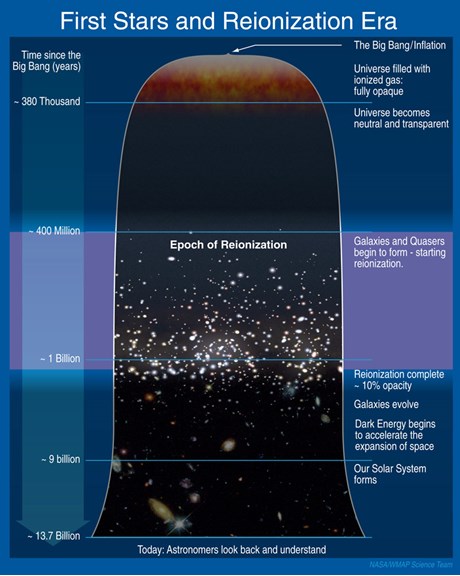Evolution of the universe
Suitable for Year Levels 9 and 10
Study the image depicting the various stages of the evolution of the Universe according to the Big Bang Theory. This image was taken from the NASA website. The stages of evolution can be divided into six parts:
- The first three minutes after the Big Bang
- The Early Universe (between three minutes and 380,000 years after the Big Bang)
- The Dark Ages (between 380,000 years and 400 million years after the Big Bang)
- Era of Ionisation (between 400 million years and 1 billion years after the Big Bang)
- Era of galaxy abundance (between 1 billion and 9 billion years after the Big Bang)
- The local Universe (between 9 billion and 13.7 billion years after the Big Bang.)
What to do:
- Research the different stages of the Universe in more detail or watch the public lecture called ‘The History of the Universe in one Hour’ by Dr Max Tegmark.
- Represent each stage with any object that can fit inside a standard shoe box. You will need to be very creative and be able to rationalise why you chose each object to represent each stage.
- Collect the objects identified in Question 2 and create a 3–4 minute video that uses these objects to explain the evolution of the Universe from the time of the Big Bang to the present time.
- Use free Apps or websites that allow you to develop your own digital timeline. Include images, photographs, text and animations that you have researched on the internet.
Victorian Curriculum Links
Science – Earth and Space Sciences Year 9 and 10
The Universe contains features including galaxies, stars and solar systems; the Big Bang Theory can be used to explain the origin of the Universe. (VCSSU129)







